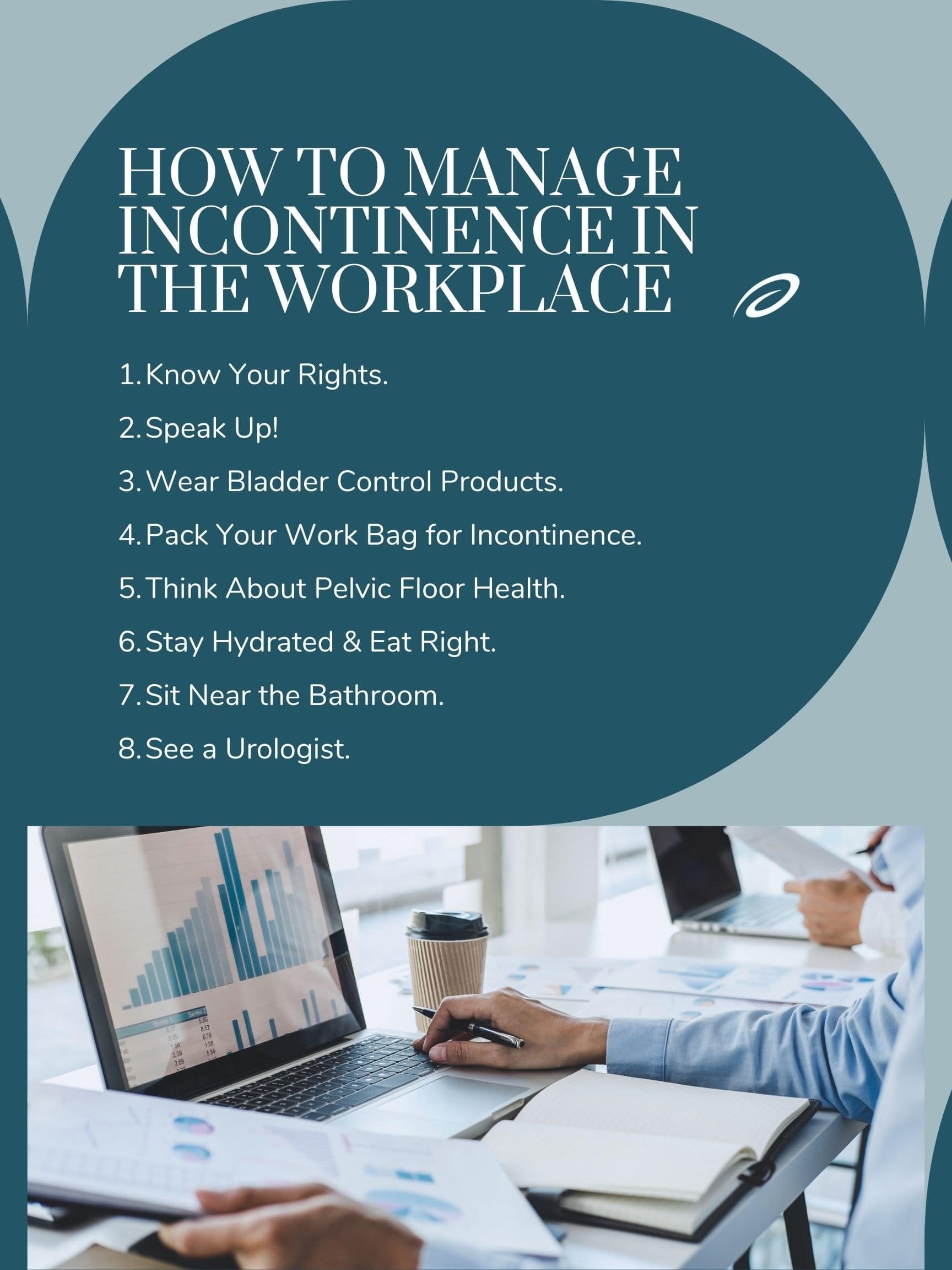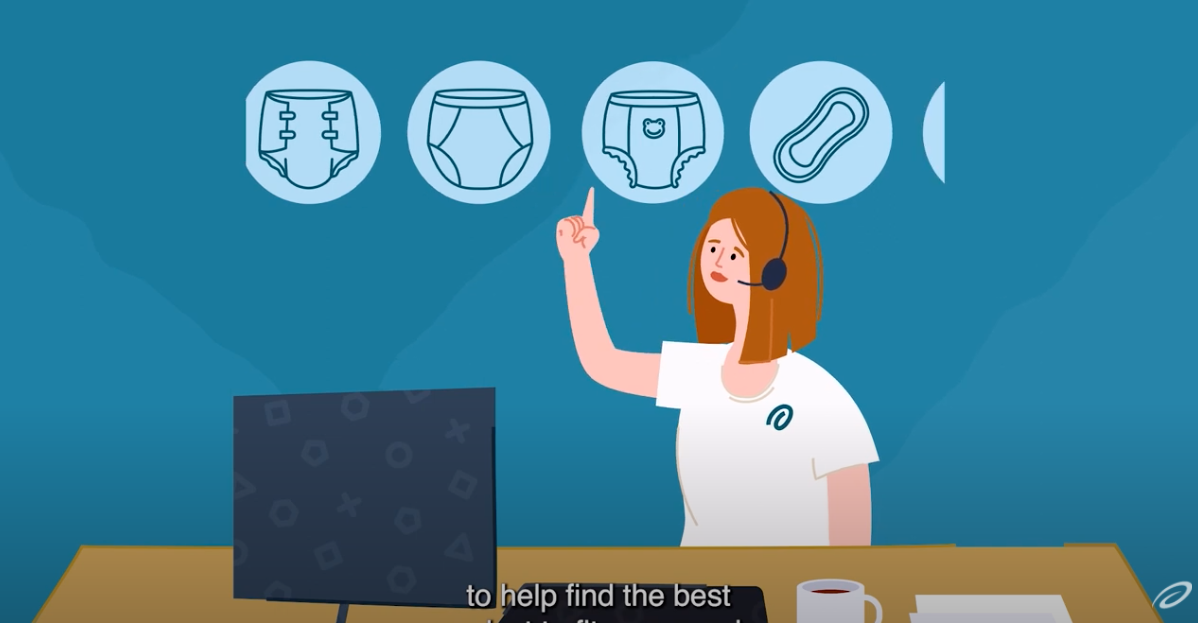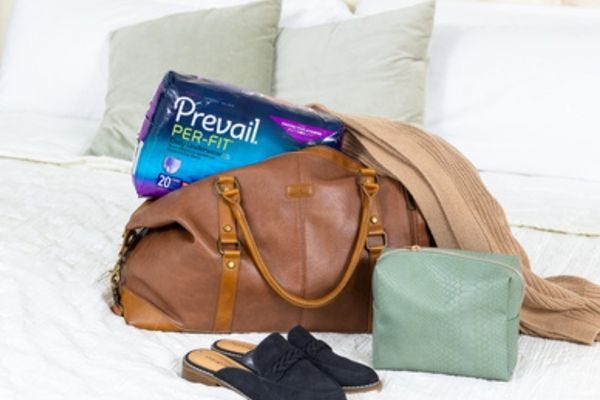Key Takeaways:
- Dealing with urinary incontinence at work can affect your concentration, ability to engage in physical activities, self-confidence, and ability to complete a task.
- Wearing protective products, packing extra clothes, and speaking with your manager can help you manage symptoms in the workplace.
Jump To: Are You Managing Urinary Incontinence at Work? Why Bladder Problems Can Be a Problem in the Workplace 8 Tips for Managing Urinary Incontinence at Work Get Free Bladder Control Products
INCONTINENCE PRODUCTS THROUGH INSURANCE:
Aeroflow Urology is in-network with many Medicaid and Medicaid-managed insurance plans and is accredited by Medicaid. Complete our Eligibility Form, and we’ll automatically check to see if your plan covers incontinence supplies. ***Must meet certain requirements to qualify.***
You will also receive the care and attention every person managing incontinence deserves; a personalized list of 100% insurance-covered incontinence supplies, a dedicated Continence Care Specialist you can contact during business hours, a user-friendly online portal for easy monthly reordering, and educational content.
Get the continence care you need with the dignity you deserve. Join the Aeroflow Urology family today! It only takes 5 minutes to get started.
Are You Managing Urinary Incontinence at Work?
You may have urinary incontinence (UI) symptoms that go unnoticed, and sometimes, you may not understand that your bladder control problems are symptoms of UI.
There are a few different types of urinary incontinence that you can experience.
Stress Urinary Incontinence: If you leak urine when coughing, sneezing, bending over, lifting heavy objects, or laughing, you may have stress urinary incontinence.
Urge Incontinence: Using the bathroom more than 8 times in a work day and feeling the frequent urge to pee may indicate urge incontinence (also called overactive bladder (OAB)).


Check Your Eligibility
2 Easy Steps
Discover the continence care essentials available through your Medicaid plan.
Overflow Incontinence: Dribbling urine throughout the day may indicate overflow incontinence, as this means that your bladder cannot empty fully during urination.
Functional Incontinence: If you have a disability or medical condition that causes you to leak urine due to being unable to make it to the bathroom on time, you may have functional incontinence. It’s referred to as functional because while your bladder and bowels may function correctly, you can still have leakage.
Mixed Incontinence: Experiencing more than one symptom of any type of UI is known as mixed incontinence. For example, more than 50% of people with stress incontinence have urge incontinence, so you may feel the sudden urge to urinate and leak when exercising together.
If you have these symptoms at work or home, you may be managing UI unknowingly.
Why Bladder Problems Can Be a Problem in the Workplace
Aeroflow Urology took a poll on social media and found that 50% of respondents wished that their employers catered more to UI issues. Managing UI in the workplace can affect many parts of your job. According to one study, 88% of employed women with severe UI symptoms said it impacted their:
- Concentration
- Ability to engage in physical activities.
- Self-confidence.
- Ability to complete a task without stopping during to use the restroom.
Other possibilities of why managing UI in the workplace can be problematic include:
You May Be Required to Engage in Physical Labor
Working while discreetly managing UI can be tricky, especially if your job requires you to engage in physical activities, like heavy lifting, running, or bending over, which can all cause bladder leaks for those with stress incontinence.
You May Need More Time for Bathroom Breaks
Using the restroom more than others sometimes comes with feelings of embarrassment. You may also be too busy to use the restroom, which can result in accidents or having to hold your urine, leading to urinary tract infections (UTIs).
You May Be Embarrassed to Discuss Your UI
We asked our audience if they revealed their UI to their boss or coworkers; only 12% said they did. It’s common for people to keep their bladder problems to themselves out of shame, but doing so may cause more problems
8 Tips for Managing Incontinence Work
Use these 8 tips to take the stress out of your work day with UI.
1. Know Your Rights
The Americans With Disabilities Act (ADA) has a section that protects employees with bladder conditions. Read up on this document and know that you have rights in your workplace to cater to your incontinence.
The document lists rights you may have, such as:
- Job restructuring.
- Flexible scheduling.
- Remote working.
- Periodic rest breaks.
- Operating cranes for lifting.
- Ergonomic equipment.
- Modified break schedules.


2. Speak Up!
You should never be embarrassed about UI because it is common worldwide and in the US. Plus, you can’t protect your rights under the ADA if you aren’t open about your condition with your boss. Make work easier on yourself and let your superiors know about your UI and what it means for you at work. Ask your boss if they can make private time to meet so you can sit down and discuss it. It may also help to have a healthcare provider’s prescription for your UI so they understand your symptoms and diagnosis.
3. Wear Absorbent Products
If you experience loss of urine or intense urges to void your bladder that leads to wet underwear at work, you can use bladder control products to control leakage. Different products may be right for you depending on how much urine you lose during the workday.
- For those with lighter leakage, products such as bladder control pads will work best. These types of pads are for men and women. These super-discreet products are absorbent and breathable for all-day office wear.
- If you have moderate leakage, adult pull-ons will be a better option. These protective underwear are made to look and feel like real underwear and are designed for both males and females. These are discreet enough to be worn in the office without anyone knowing!

- For those with heavier leaks, we recommend using adult briefs. These products have tear-off side panels for easy and quick removal so you can be discreet about changing at work.
If you want to make your work day less stressful, use free bladder control products from Aeroflow Urology. We know that these supplies are essential to maintaining quality of life, especially in the workplace, which is why we help you get your products covered by insurance.
If you qualify, we will:
- Send you free incontinence product samples so you can find the perfect product to wear during your work day.
- Navigate and complete all the confusing insurance paperwork for you, letting you know if you qualify for free products just days after you apply.
- Ask your healthcare provider for a prescription for incontinence on your behalf. (Pro tip: If you’d like to get your products faster, tell them we’ll be reaching out for a prescription!)
- Send your products on a monthly basis in discreet packaging.
4. Pack Your Work Bag for Incontinence
Have you ever had an accident at work and gotten your clothes wet? Whether it’s because your store-bought bladder control products leaked through or because you weren’t wearing any, having wet clothes and trying to focus on work can be highly uncomfortable. Make sure you pack your work bag with everything you might need to manage accidents and UI symptoms, including:
- Extra bladder control products (pads, adult briefs, adult protective underwear).
- Extra underwear.
- Extra bottoms.
- Cleansing wipes.
- Gloves
- A trash bag or dry bag for soiled clothes.
- A reusable water bottle to stay hydrated.


5. Think About Pelvic Floor Health
You can work out your pelvic floor muscles at work to help strengthen them and reduce UI symptoms. Dr. Bri’s Vibrant Pelvic Health recommends doing the following pelvic floor exercises at work to strengthen and relax your pelvic floor:
- Take deep breaths.
- Relax your butt and belly.
- Stand and sit with good posture and alignment.
- Change positions whether you’re standing or sitting.
- If you stand at work, do certain standing exercises that strengthen the pelvic floor.
- Use an ergonomic chair or exercise ball to sit tall on.

You can also do Kegel exercises at home to continue strengthening your pelvic floor.
6. Stay Hydrated & Eat Right
While you may think, “If I drink less water at work, I won’t need to go to the bathroom as much,” this is actually incorrect! Drinking less water makes your urine more concentrated, which irritates your bladder and makes you pee more! Drink as much water as you need to throughout the day to stave off thirst and keep things functioning correctly.
Avoiding bladder-irritating foods while at work may also be a good idea. Spicy foods, caffeine, and tomato-based products can worsen UI symptoms. Eating a diet filled with a variety of healthy foods is essential to avoid constipation, which can also increase symptoms of UI.
7. Sit Near the Bathroom
If you have frequent voiding urges, speak with your manager or coworkers about sitting close to the restroom so you can get there quickly when needed.
8. See a Urologist
To get a prescription for incontinence, you will need to speak to a healthcare provider. Seeing a urologist is a great way to gain insight into your unique incontinence needs and make a plan to decrease symptoms if possible.
While UI can feel shameful, it’s essential to know that it’s very common and reversible in many cases. Speak with your healthcare provider to see what you can do to manage incontinence in the workplace.
Fultz, N., Girts, T., Kinchen, K., Nygaard, I., Pohl, G., & Sternfeld, B. (2005). Prevalence, management and impact of urinary incontinence in the workplace. Occupational Medicine, 55(7), 552–557. https://doi.org/10.1093/occmed/kqi152
Nitti, V. W. (2001). The prevalence of urinary incontinence. Reviews in Urology, 3 Suppl 1(Suppl 1), S2-6. https://www.ncbi.nlm.nih.gov/pmc/articles/PMC1476070/
Fitzgerald, S. T., Palmer, M. H., Kirkland, V. L., & Robinson, L. (2002). The Impact of Urinary Incontinence in Working Women: A Study in a Production Facility. Women & Health, 35(1), 1–16. https://doi.org/10.1300/j013v35n01_01
Stress Incontinence: Causes, Symptoms and Treatment. (n.d.). Cleveland Clinic. https://my.clevelandclinic.org/health/diseases/22262-stress-incontinence
Information provided on the Aeroflow Urology blog is not intended as a substitute for medical advice or care from a healthcare professional. Aeroflow recommends consulting your healthcare provider if you are experiencing medical issues relating to incontinence.








